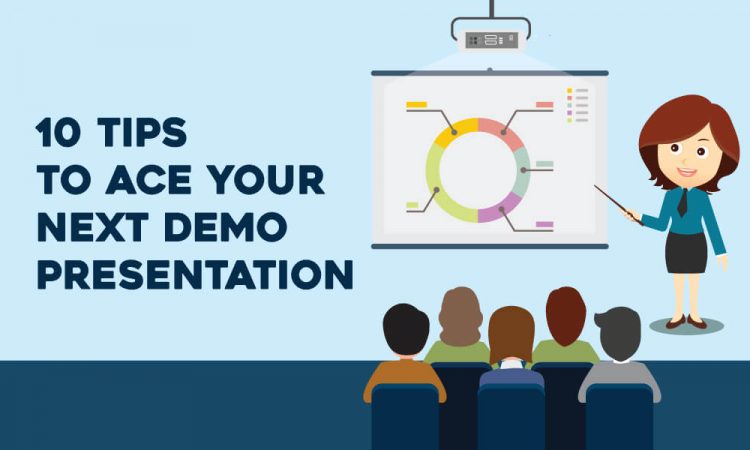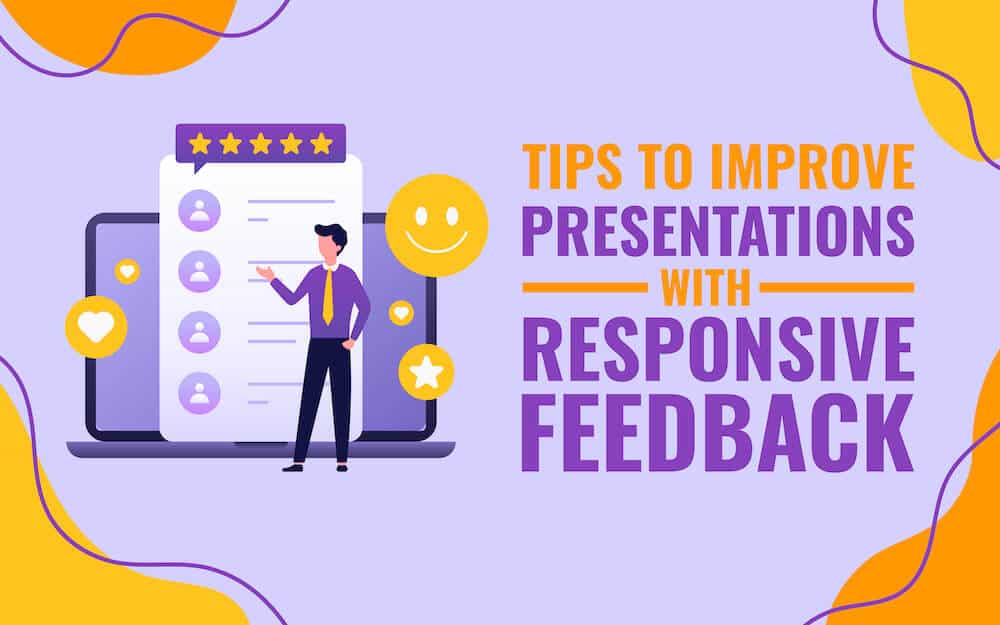
Imagine you’ve spent the past few years developing and building the product of your dreams. It is now time to introduce the world to your innovation and allow them to experience its magic. However, to do so, you must pull off a stunning demo presentation to captivate the audience and showcase your work in its most efficient form.
Well, there’s no denying that a great demo can make or break the success of your launch. Whether you’re showcasing to potential investors, interested customers, or the general public, a well-executed demonstration can generate great excitement, build anticipation, and drive sales. But how can you ensure that your demo is genuinely compelling and engaging?
To help you pull off a great product demo, we’ve compiled a list of some essential tips to keep in mind.
1. Knit a Story Around Your Product
When it comes to demos, storytelling is one of the best ways to intrigue the audience and capture their attention in the blink of an eye. Weaving a compelling narrative around your product is crucial to showcase its value and usability and illuminate its unique propositions.
Let us understand this with the example of Tesla and how its founder Elon Musk harnessed the power of storytelling and convinced the world to focus on electric vehicles. In his presentation, Musk began by narrating how we live in a world dependent on fossil fuels, plagued by pollution, and grappling with the consequences of global warming. He then strategically weaved the narrative around the need for sustainability, introduced Tesla as the catalyst of change, and ignited hope amongst the audience.
Therefore, the power of Elon Musk’s product demo lies in his ability to evoke emotions and showcase his innovations as the need of the hour. This approach drastically changed how the world looked at electric vehicles and made them synonymous with Tesla.
2. Understand Your Audience
Your audience may sometimes belong to different backgrounds, with people from diverse fields and different personas. Therefore, understanding your audience is crucial to deliver a successful product demo.
Here are a few questions that you can answer while researching your audience-
- What is their cultural background?
- Which age groups and genders do they belong to?
- What is their occupation?
- Which fields do they belong to, and how much experience do they have?
It will help you curate a presentation dedicated solely to your audience, making it an incredibly memorable experience for them.
3. Know Your Product or Service Like an Encyclopedia
If you truly want to build credibility for your product, ensure that you know the ins and outs of it. Such detailed knowledge serves as a strong foundation for the presentation that you will deliver and help you tackle any questions that come your way.
Having a comprehensive understanding of your product boosts your confidence and self-esteem. It enables you to speak about the product’s unique propositions, functionalities, advantages, etc., with conviction and ease. Such confidence also allows the audience to see you as a trusted source and increases their faith in you and your product.
Knowing your product also equips you to handle questions and objections effectively. During a product demo, it is not uncommon for the audience to seek clarification or raise questions. By having expertise in your product, you can provide accurate and detailed responses, addressing any inquiries or doubts. It demonstrates your command and reinforces trust in your product’s capabilities.
4. Make it Interactive by Inviting Participation
Notch up your demos by inviting the audience to participate in your presentation and create an interactive atmosphere. By doing so, you can curate a more immersive experience for the audience that fosters deep understanding and enables them to connect with the products.
You can provide hands-on experience and allow the audience to physically see, try, and use your product or service.
For instance, if you’re promoting your newly launched Application on Investment and Learning, you can ask the audience to download a beta version on their mobile phones and experience the app themselves. It will help draw the attention of potential buyers as well as investors.
5. Structure the Presentation
A well-structured presentation is essential to ensure a coherent and seamless flow of information. It conveys the message flawlessly and showcases your product effectively.
Usually, the structure is divided into three main parts. Let us understand this further with the analogy of Apple’s presentation of its iPhone below-
Beginning – Commence by introducing the purpose of your product compellingly. This will determine the tone for the rest of the presentation and enable the audience to set their expectations accordingly. Make sure to keep the introduction brief yet informative.
For instance, in his keynote presentation of the iPhone, Steve Jobs began by stating the device’s core purpose, which helped the audience gauge what was about to unveil in the next hour.
The Middle – This is the part where you can be as descriptive as you want and highlight your product’s USPs in an organized manner. You can address its features, use visuals and graphics to display statistics or data and convince the audience that your product is indeed unique and valuable.
In this part, Jobs described the benefits of the iPhone, captivated the audience with its touch features, and showcased the seamless integration of multiple applications. He even used multimedia to intrigue the viewers.
The End – Remind your audience of what you told them, provide them with a concise recap, and reinforce the benefits of your product. End with a very clear call to action, such as asking them to sign up for a trial or make a purchase.
Well, Steve Jobs ends the presentation by clearly summarizing each point and asking the audience to participate in the revolution by purchasing an iPhone. This CTA inspired people to buy the product and made the launch a huge success.
Therefore, clearly structuring your presentation can increase its impact and leave a positive impression.
6. Hit Their Pain Points and Solve Their Problems
One of the easiest ways to sell your product is by addressing it as a solution to your audience’s problems. Let us understand it this way- imagine you are delivering your product demo of a Social Media Management Software to a group of marketers. Before highlighting your software’s benefits, you must highlight its problems.
You can begin by talking about how social media managers find it difficult to manage campaigns simultaneously at all channels and waste much of their time keeping track of each of them separately. Then you can emphasize how your product can help them achieve goals from a central platform, manage their time, lead to better results, and improve efficiency all at once.
It will help you play with their psychology and allow you to present your product much better.
7. Save Your Time by Using Templates
Crafting the perfect slides from scratch for your presentation can be pretty challenging. Even though it is necessary to craft stunning visuals, they can take up much of your energy. They can divert your time more towards curating the presentation rather than focusing on the delivery and the product know-how.
Thus, we suggest using expert-designed presentation templates that can be easily added to your presentations and customized as per your requirements.
For example, if you wish to show the product cycle, instead of making your own graphic, you can add this template in the blink of an eye and make your slide much more captivating. You can edit the information, and your graphic is ready!
8. Keep it Simple
In the realm of demo presentations, simplicity is supreme. Overwhelming audiences with excess information or inundating them with technical jargon can lead to disengagement. It can further disinterest them and turn them against you.
Therefore, the key lies in distilling your product down to its essence and effectively conveying the core benefits and unique selling points.
One can do this by keeping a clean and simple slide format, maintaining an equilibrium between text and visuals, and including the right number of statistics and data. Including only that information that would resonate with the audience and captivate them is crucial.
Thus, simplicity is the key to winning over your product demo presentations.
9. Deliver Handouts and Follow Up Materials
After your presentation, it is vital that your audience retains the information and visits you again. Thus, delivering handouts and inboxing quality follow-up materials is a great way to do so.
These resources will empower the audience to take a desired action and allow them to comprehend the information at their own pace.
It can include relevant material, such as case studies during product development, customer testimonials, statistics, product brochures, trial forms, etc. By delivering splendid handouts, you can demonstrate your commitment to providing valuable information and support to your audience.
10. Practice Until You Become Perfect
Practice is the secret ingredient that makes your presentations perfect. It doesn’t matter if you are a beginner or an expert; rehearsing multiple times before the big day is vital for success.
One effective way to do this is by practicing in front of a mirror or recording yourself. It will allow you to identify areas where you need to improve, such as your body language, tone of voice, and pacing. By putting in the effort to hone your skills, you can become a confident and effective product demo presenter.
Conclusion
A well-planned and executed product demo presentation can be a game-changer for your business. It can create a memorable experience for the audience and position your product at a great place in the market.



